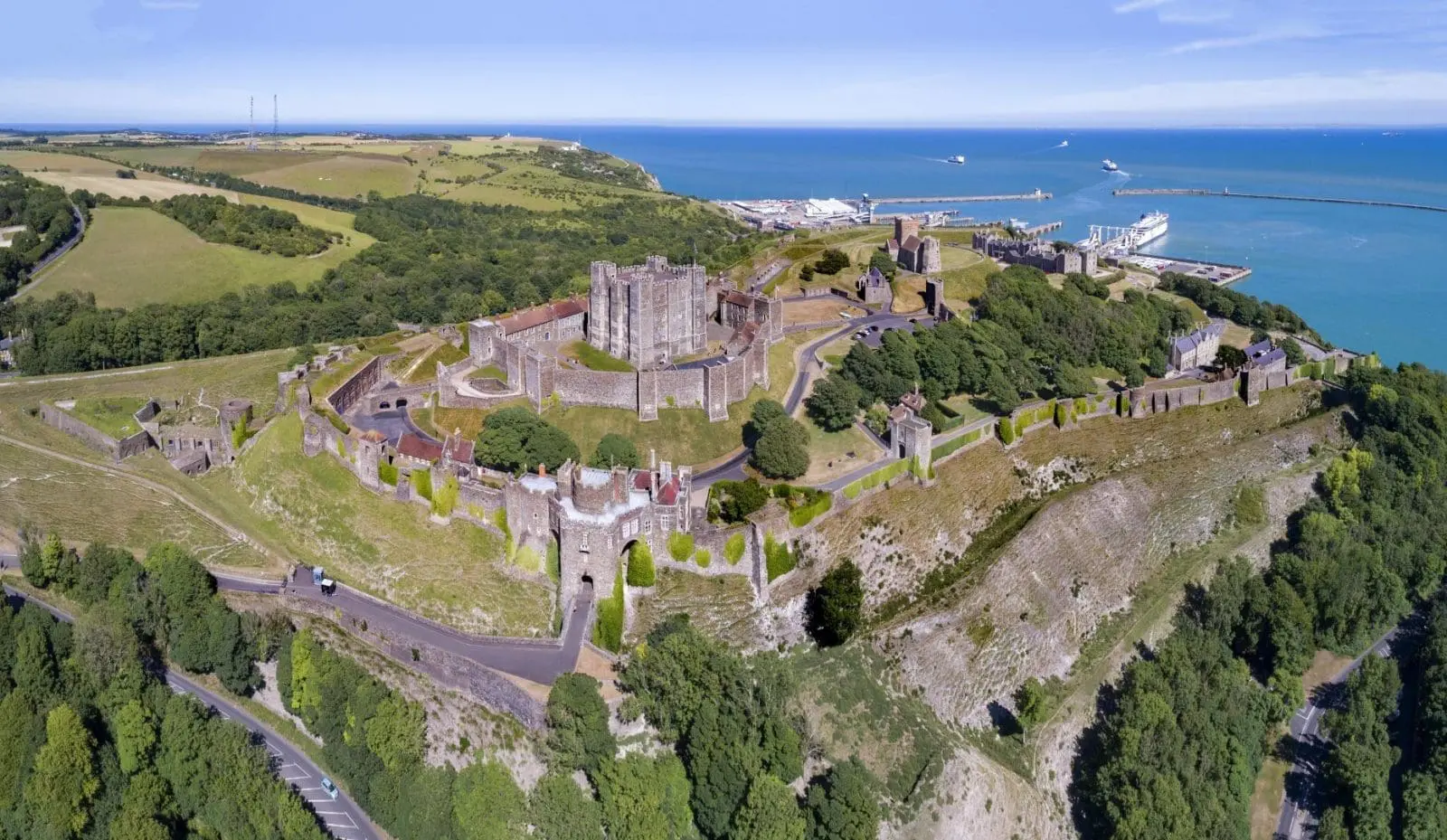Your basket is currently empty!

Dover Castle
While the first stone castle here was built in the 1160s, the history of fortification on Dover Castle goes back much earlier. There is evidence of Iron Age hill forts established on the cliffs over 2000 years ago. Centuries later, the Romans built a lighthouse here in the 2nd century AD to guide ships entering the busy port below. This ancient beacon was the first formal fortification atop this strategic location.
Henry II’s Royal Castle
It was King Henry II who established the first stone castle at Dover in the 12th century, replacing earlier earthwork and timber fortifications. Seeking to control traffic across the Channel, he spent lavishly to turn Dover into a major royal castle and maritime base. The Great Tower later built by Henry stands to this day as the largest surviving medieval stone tower in England.

Successive Expansions
Over the next centuries, the castle was expanded by Henry’s successors as kings and queens sought to reinforce this vital stronghold. Battlements, dungeons, and secret tunnels were added for defense and control. By the Tudor period, it was one of the most heavily fortified castles in the realm, primed to withstand attack from France and Spain.
Dover Castle – A Royal Stronghold
Dover Castle has served as an important royal residence and stronghold throughout its history, housing kings and queens across medieval and early modern Britain. Its proximity to the continent and formidable defenses made it a prized possession of the monarchy.

A Castle Fit for Kings
Records show that by the early 13th century the castle was used as an official royal residence, with King John spending lavishly to enhance its accommodations. Later monarchs like Edward I, Edward III, and Henry VIII all held court at Dover, receiving distinguished guests within its mighty walls. Even Elizabeth I was known to stay when the threat of invasion loomed.
Luxurious Living Quarters
Despite its military function, this castle in Dover was no drab barracks. It contained luxurious living quarters furnished with rich tapestries, silver plate, and furnishings to make monarchs feel at home. The surrounding orchards and gardens provided produce and game for royal feasts. From banquets in the Great Hall to relaxing in the castle grounds, Dover offered royalty comfort as well as protection.
Ready for War
Yet for all its refinements, Dover remained an active stronghold prepared for war. When conflict brewed across the Channel, monarchs would summon troops and ships muster at Dover, ready to defend against invading forces. During peacetime, a small standing garrison remained. With its sheer cliffs and concentric rings of defenses, the castle stood ready to withstand attack and siege if need be.

Dover Castle in Wartime
From medieval conflicts to the World Wars of the 20th century, Dover has played a crucial defensive role in times of war due to its strategic location. Generations of soldiers manned its walls, ready to lay down their lives for king and country.
Napoleonic Threat
During the upheaval of the French Revolutionary and Napoleonic Wars, fears of a French invasion ran high. Dover Castle grew into a barracks town, with soldiers drilling daily to counter the threat of Napoleon. New gun batteries were placed along the cliffs, while the labyrinth of medieval tunnels beneath the castle were expanded as secure military storage.
World War II Command
However, it was World War II that saw the castle become truly critical to British defense. As Nazi Germany occupied France, Dover was at the frontline of Anglo-German hostilities. The castle housed the Dover Command, organizing coastal defenses along the Channel. Its guns dueled with German batteries across the water.
Secret Wartime Tunnels
Extensive underground tunnels were built beneath the castle to house operations, hospitals, and barracks safe from Luftwaffe bombs. Thousands of soldiers worked and slept in their dimly-lit tunnels, maintaining a constant vigil. The tunnels remain today as a poignant memorial to their service and sacrifice keeping Britain free.
How to find Dover Castle
Map to Dover Castle
Queen Elizabeth Road, Dover, Kent, England, CT16 1LS, United Kingdom
Discover more from Histories and Castles
Subscribe to get the latest posts sent to your email.
-
Eudora 925 Sterling Silver Viking Dragon Necklace for Man Women Celtic Knot Compass Amulet Pendant Personality Jewelry Fine Gift
£31.68 – £40.32 -
Witch Runes Set – Divination Stones for Luck and Protection
£34.50 -
Fortune Favours the Bold T-Shirt | Medieval Motto Tee
£19.10 – £35.86 -
Spitfire T-Shirt | Battle of Britain Union Jack TeeShirt
£19.10 – £35.86











